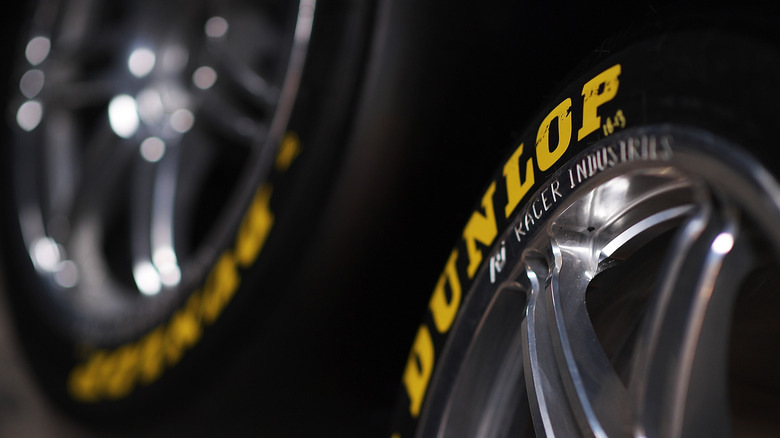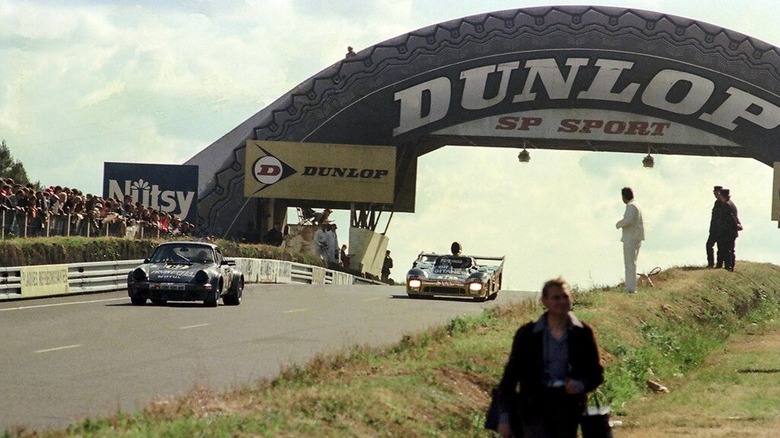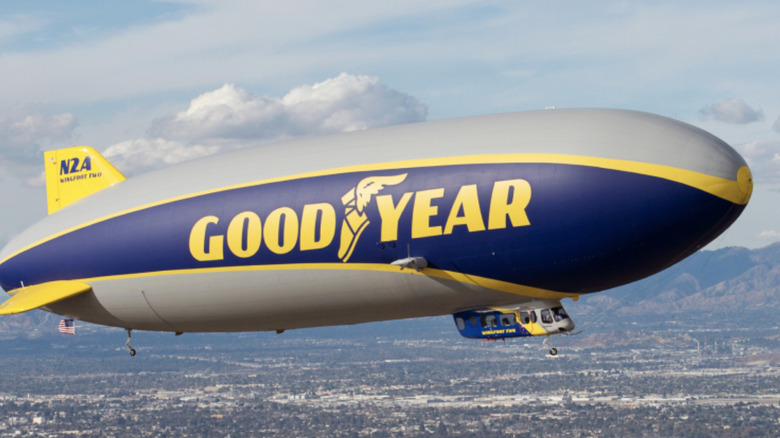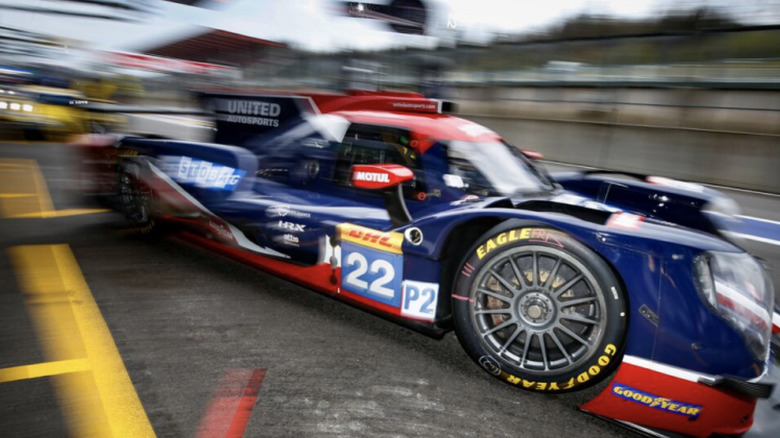Are Dunlop Tires & Goodyear The Same Company? A Look At The Brands' Relationship
In a world where the automotive industry is making rapid technological advancements in engineering and design, its easy for more fundamental safety features like tires to be overlooked. Yet considering recent research on how the millions of tons of nano-particles from tires impact the environment, their overall importance shouldn't be underestimated. Among SlashGear's top 11 major tire brands of 2024 was the internationally renowned Dunlop brand, which has a reputation for creating high performance tires in motorsports. The yellow-lettered company recently made news with the announcement of its innovative SportSmart Mk4 motorcycle tires, replacing the Mk3 with an array of enhancements like increased casing traction for improved mobility on tough surfaces, elevated precision, and a more efficient warm-up time for optimized racing performance.
However, in more recent years the Dunlop brand has undergone a variety of partnerships with managing companies in different regions. Currently two companies co-own the manufacturer — the Japanese firm Sumitomo Rubber Industry (SRI) acts as the minor stake holder with 25% ownership, partnering with the American Goodyear Tire & Rubber Company which has roughly 75% ownership. Of the two co-owners Goodyear manages the flow and distribution of Dunlop products throughout North American markets. Goodyear has successfully cultivated a strong built-in brand recognition largely due to effective marketing strategies a la the Goodyear Blimp as well as futuristic innovation like its recharging tires for EVs. Given each of their own unique histories, how then do both of these brands maintain the balance while keeping their separate identities in the industry?
Dunlop's heritage is rooted in the Irish bicycle scene
Dunlop originated in Dublin, Ireland in 1888 when John Boyd Dunlop attempted to help his son get a better handle of his tricycle by gluing plastic sheets to the tires and inflating them. Roughly a year later Dunlop had improved this invention as the first form of the pneumatic tire for bicycles, enabling more people to move faster on roadways with more control. Versions of the pneumatic tire for the automobile wouldn't be available until 1911 when Philip Strauss developed an equivalent that could handle the stresses of a hefty vehicle. Interestingly, about four decades prior to Dunlop's creation Charles Goodyear, an American inventor who would later become the eponym for the Goodyear company, had patented the vulcanization process of rubber — meaning that without his method tires would not be able to function effectively on any vehicle.
Originally registered in Great Britain as Byrne Brothers India Rubber Company, Ltd., the company wouldn't settle on the recognizable Dunlop brand name until 1900. With decades of resources dedicated to research and development, the company built a strong foundation in high performance tires. Although Dunlop's achievements in the motor-cross championships made up a big part of its brand identity, the company also compiled a body of impressive achievements in the racing circuits, such as 34 wins at the grueling 24-hour Le Mans and 84 Formula 1 Grand Prix victories.
[Featured image by Gillfoto via Wikimedia Commons | Cropped and scaled | CC BY SA-3.0]
The influence of Goodyear is hard to miss
Across the Atlantic and 10 years after John Boyd Dunlop began tinkering with his son's tricycle, F.A. "Frank" Seiberling and his brother C.W. "Charley" Seiberling purchased two factory buildings in Chicago where they began manufacturing rubber-made goods such as carriage and bicycle tires. With the emergence of the automobile and Henry Ford's Model T, the brothers pivoted toward mass producing tires for the automobile company. Goodyear revolutionized the design of the wheel by making it straight-edged to improve mobility and comfort. During World War II, it channeled resources into its newly minted aviation division that developed the nimble Corsair for the U.S. Air Force. Since then this multifaceted brand has expanded into numerous specialties, from cutting-edge performance in racing, to durable plastics used in laboratories, to developing the first tires that would touchdown on the moon's surface in 1971.
In comparison to Dunlop, the majority of Goodyear's racing legacy is centered on its high performance tires for competing cars. One of the contributing factors to Ford's 1960 win at Le Mans that later received the silver screen treatment with the blockbuster "Ford v. Ferrari" was the fact that it was the first time the Ford team had switched to Goodyear tires for its racecars. A large number of competitors have crossed the victory line with Goodyear tires, from Dakar Rally to NASCAR, the latter of which has led to a prosperous co-operative partnership spanning almost seven decades.
A brand divided between two corporations
The corporate relationship between Dunlop and Goodyear formed in 1999, when the latter decided to embark on its joint venture with SRI, which already had a stake in the British company. Under the new agreement, Sumitomo maintained control of the Dunlop trademark in Japan's market, and Goodyear received a 75% share of profit received from North America and Europe.
However, the chain of custody of the Dunlop brand became more fragmented in 2015, when Goodyear and Sumitomo eventually dissolved their alliance. Under the dissolution agreements, Goodyear received exclusive rights to sell Dunlop-branded tires in the U.S, Canada, and Mexico to all non-Japanese automakers. Meanwhile, SRI retained the right to sell Dunlop-branded tires in the North American motorcycle market as well as any other market not party to the previous exclusivity agreement such as Africa or Turkey, plus the added bonus of an estimated $271 million payout from Goodyear.
Overall, it would be difficult to claim that Goodyear and Dunlop are one and the same, given the fractured custody of the brand name in various industries. Goodyear has a lot of influence over the brand's presence in North America, but last year it also considered divesting from the Dunlop brand along with other assets in order to channel resources into the continued expansion of the managing company's own tire brand. However, no further decisions have been reported regarding this possibility since Goodyear made a $905 million deal with Yokohama Tire for its Off-The-Road tire subsidiary.



